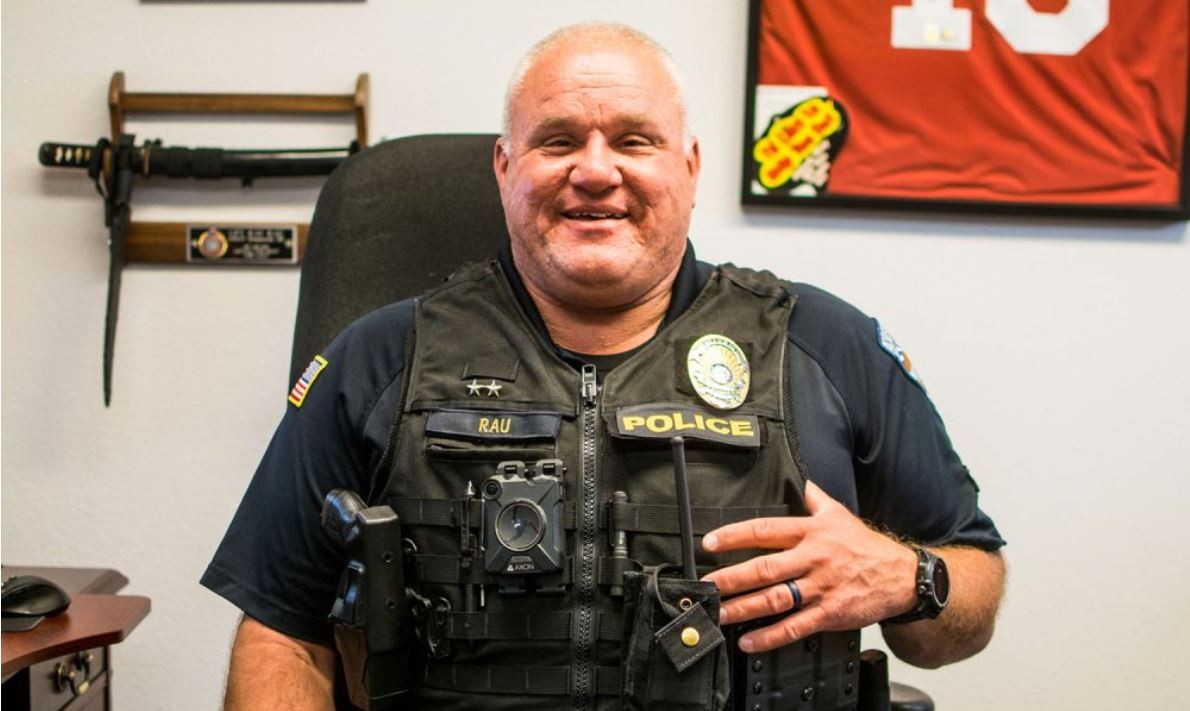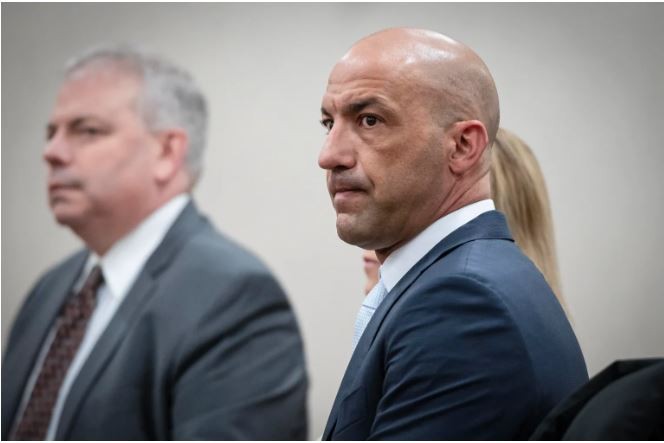- Home
-
News | Services
- CertificationEvidence Training & Certification Programs
- AccreditationAccreditation Guide & Resources
- Evidence News Top National & Global News
- NewsletterMonthly IAPE Email Newsletter
- Sponsors/AdvertisersAdvertisers & advertising options
- Job BoardView & Submit Job Listings
- Evidence Associations State Affiliates & Organizations
-
 ResourcesBooks | Manuals | Guides
ResourcesBooks | Manuals | Guides
- IAPE Forms & Professional StandardsForms | Standards Sample
- Manuals & GuidesSubmission | Packaging | & More
- DNA ResourcesJournal Articles & Law Enforcement Links
- Other ResourcesAudits | Digital | Best Practices
- Fentanyl ResourcesAudits | Digital | Best Practices
- Admin KillAdmin Approval to Purge Docs
- IAPE GalleryBest Practices From Agencies
- Fentanyl Resources & Guides
- Evidence by the book
- Evidence LogOnline IAPE Magazine
- Classes
- Membership
- About
- StoreIAPE Krapola
-
 Video ClassStudent Login
Video ClassStudent Login
Ensuring justice by securing the evidence
1401 Hits
The Denver Post
BYLINE: Susan Greene Denver Post Columnist
Denver, CO
Clarence Moses-EL may spend the rest of his life behind bars as the face of a national problem that too long has gone ignored.
From prison, the Colorado inmate won a judge's permission to test the DNA evidence from a rape for which he says he was wrongfully convicted. He managed to raise $1,000 from fellow inmates to pay for the lab work. Denver police wrapped up the evidence and labeled the box, "DO NOT DESTROY."
Nevertheless, it got tossed in the trash.
Nearly 25 years since the dawn of the DNA era, there still are no federal safeguards preventing local authorities from destroying traces of human biology that can free the wrongfully convicted or help crack unsolved cases. Nobody on a national level has taken a meaningful look at preservation.
Until now.
The Obama administration this month is launching a federal working group to recommend standards for preserving forensic evidence.
"The aim is national guidelines that can be adopted by law enforcement, courts and anyone else who's responsible for storing evidence, especially long term," says Mark Stolorow of the National Institute of Standards and Technology.
A Denver Post series, "Trashing the Truth," found authorities across the country have lost or destroyed tens of thousands of DNA samples since genetic fingerprinting revolutionized crime solving.
In a nation where TV shows glorify DNA forensics, all too many real-life evidence rooms are mismanaged and under-funded, routinely failing to track valuable items from crime scenes.
Prosecutors and police nationwide have cited costly storage space among reasons to justify tossing DNA samples, including rape kits.
Taxpayers in Colorado Springs paid $1.24 million to expand evidence rooms in 2002. But the space was cramped with unorganized piles within three years. So the Police Department trashed evidence from 500 cases, including several cold-case sex crimes and suspected murders.
One of those cases was the disappearance of Gloria Berreth in 1994. Police didn't tell her family they had burned the evidence.
Her daughter learned about the purge months ago from an archived version of a 2-year-old article. She was stunned that police let her mom's case go so cold.
Funded for at least a year by the U.S. Justice Department, the new federal working group will include scientists, legal experts and evidence custodians who have yet to be appointed. They'll recommend protocols on what types of evidence should be preserved, how and for how long, Stolorow says. They're likely ultimately to ask Congress for funding.
The Bush administration killed previous attempts to address the problem. "States have been needing guidance in this area for quite some time. This is a critical step forward," says Rebecca Brown, policy advocate for the New York-based Innocence Project.
Colorado implemented some reforms in 2008. But those efforts and the federal working group come too late for Moses-EL, 55, who remains locked up serving a 48-year sentence. The DNA revolution passed him by when Denver took the biological proof of his guilt or innocence and threw it in a Dumpster.
"Someone needs to set this straight," he has written from the Kit Carson Correctional Facility in Burlington. "If not for me, then for the next guy."
Susan Greene writes Sundays, Tuesdays and Thursdays. Reach her at 303-954-1989 or
BYLINE: Susan Greene Denver Post Columnist
Denver, CO
Clarence Moses-EL may spend the rest of his life behind bars as the face of a national problem that too long has gone ignored.
From prison, the Colorado inmate won a judge's permission to test the DNA evidence from a rape for which he says he was wrongfully convicted. He managed to raise $1,000 from fellow inmates to pay for the lab work. Denver police wrapped up the evidence and labeled the box, "DO NOT DESTROY."
Nevertheless, it got tossed in the trash.
Nearly 25 years since the dawn of the DNA era, there still are no federal safeguards preventing local authorities from destroying traces of human biology that can free the wrongfully convicted or help crack unsolved cases. Nobody on a national level has taken a meaningful look at preservation.
Until now.
The Obama administration this month is launching a federal working group to recommend standards for preserving forensic evidence.
"The aim is national guidelines that can be adopted by law enforcement, courts and anyone else who's responsible for storing evidence, especially long term," says Mark Stolorow of the National Institute of Standards and Technology.
A Denver Post series, "Trashing the Truth," found authorities across the country have lost or destroyed tens of thousands of DNA samples since genetic fingerprinting revolutionized crime solving.
In a nation where TV shows glorify DNA forensics, all too many real-life evidence rooms are mismanaged and under-funded, routinely failing to track valuable items from crime scenes.
Prosecutors and police nationwide have cited costly storage space among reasons to justify tossing DNA samples, including rape kits.
Taxpayers in Colorado Springs paid $1.24 million to expand evidence rooms in 2002. But the space was cramped with unorganized piles within three years. So the Police Department trashed evidence from 500 cases, including several cold-case sex crimes and suspected murders.
One of those cases was the disappearance of Gloria Berreth in 1994. Police didn't tell her family they had burned the evidence.
Her daughter learned about the purge months ago from an archived version of a 2-year-old article. She was stunned that police let her mom's case go so cold.
Funded for at least a year by the U.S. Justice Department, the new federal working group will include scientists, legal experts and evidence custodians who have yet to be appointed. They'll recommend protocols on what types of evidence should be preserved, how and for how long, Stolorow says. They're likely ultimately to ask Congress for funding.
The Bush administration killed previous attempts to address the problem. "States have been needing guidance in this area for quite some time. This is a critical step forward," says Rebecca Brown, policy advocate for the New York-based Innocence Project.
Colorado implemented some reforms in 2008. But those efforts and the federal working group come too late for Moses-EL, 55, who remains locked up serving a 48-year sentence. The DNA revolution passed him by when Denver took the biological proof of his guilt or innocence and threw it in a Dumpster.
"Someone needs to set this straight," he has written from the Kit Carson Correctional Facility in Burlington. "If not for me, then for the next guy."
Susan Greene writes Sundays, Tuesdays and Thursdays. Reach her at 303-954-1989 or
How do you feel about this post?
Search IAPE
Blotter - Latest News
This story is not getting any better.
FDLE criminal probe of Starke Police: Guns, money, drugs among 2,500 pieces of missing evidence April 3rd, 2024 STARKE, Fla. — Action News Jax's Ben Becker is getting answers about a Northeast Florida...
Former Chief gets 10 days in jail!
Former Nyssa chief convicted of misconduct, sentenced to jail, loses badge April 3rd, 2024 Ray Rau, Tillamook police chief and former chief in Nyssa, was convicted of official misconduct Wednesday for...
Guilty! Vermont State Trooper Stole Evidence.
'Breach of trust': Former state trooper strikes plea deal in evidence room theft case April 5th, 2024 Giancarlo DiGenova, who resigned his position last year, received a probationary sentence Friday a...
News By Region
BC
(16)
District of Columbia
(22)
Northeast
(957)
Connecticut
(31)
Delaware
(7)
District of Columbia
(22)
Maine
(15)
Maryland
(38)
Massachusetts
(125)
New Hampshire
(26)
New Jersey
(33)
New York
(88)
Pennsylvania
(139)
Rhode Island
(12)
Vermont
(22)
Southeast
(1188)
Alabama
(49)
Arkansas
(30)
Florida
(172)
Georgia
(59)
Kentucky
(46)
Louisiana
(91)
Mississippi
(8)
North Carolina
(77)
South Carolina
(47)
Tennessee
(64)
Virginia
(47)
West Virginia
(35)
Southwest
(510)


